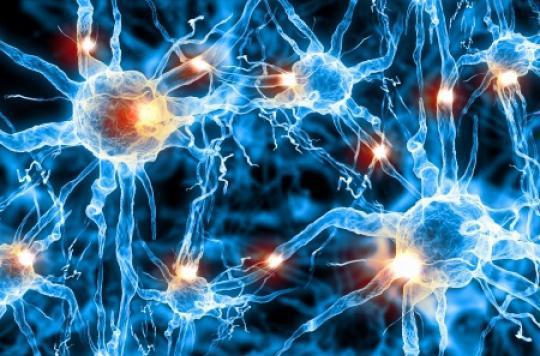INTERVIEW. Alexandre Charlet explains how around thirty small neurons, discovered by his team, regulate the production of oxytocin.

100 billion neurons in the brain. But only 30 are involved in the production of oxytocin. For the first time, researchers have demonstrated the mechanism that allows the release of this hormone, which modulates the response to pain in particular. This small group of neurons is responsible for this colossal task, they explain in Neuron.
Oxytocin is a hormone that has something to dream about. Nicknamed “the hormone of love”, she is not confined to this single role … far from it! It is also involved in the contraction of the uterus during childbirth, the regulation of social interactions, pain … But until now, the process that allowed it to be produced was unknown.
Putting the signal to sleep
The team led by Alexandre Charlet, of the CNRS, finally answers this question. It all starts from a small area of the hypothalamus where 30 “little neurons” squeeze. Small in size, compared to the rest of the brain’s neuronal population. Their role, on the other hand, is essential because they alone coordinate the release of oxytocin.
When the body is shocked or inflamed, this information travels to neurons in the spinal cord via peripheral nerves. The message is interpreted there and then sent back to other neurons, including those located in the hypothalamus. “Their first action is to control the blood release of oxytocin”, explains Alexandre Charlet, contacted by Why actor. A phenomenon made possible by the exchange with the “large” neurons which release oxytocin in the blood, allowing the pain signal in peripheral neurons to fall asleep.
A double action
The second role of small neurons is more direct. “They project oxytocin into the deep layers of the spinal cord to inhibit the transmission of the nociceptive message from the spinal cord to the brain. We have a double action to block the message and then inhibit the neurons ”, summarizes Alexandre Charlet.
Faced with such a discovery, one could get excited, and imagine the development of treatments for chronic pain. The French researcher is a bit more cautious. For the moment, this work mainly allows us to better understand how the oxytocinergic system behaves. “The question was how this system acted in so many regulations in such a specific way,” he explains. If you crudely stimulate the whole hypothalamus, a lot will happen and nothing specific at the same time. The identification of this population provides a first possible answer. “
Alexandre Charlet, CNRS researcher: ” We could isolate them by modifications of the genome. It is impossible to do this in humans. Therapeutic applications are distant. “
However, research will continue. The team now hopes to understand how positive emotions are produced and regulated.
.

















